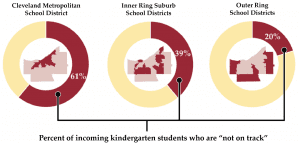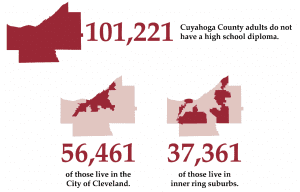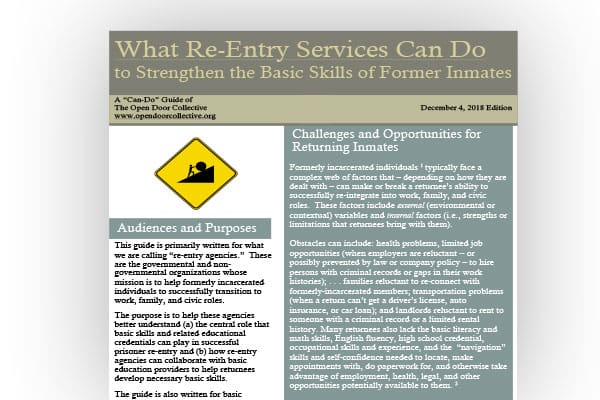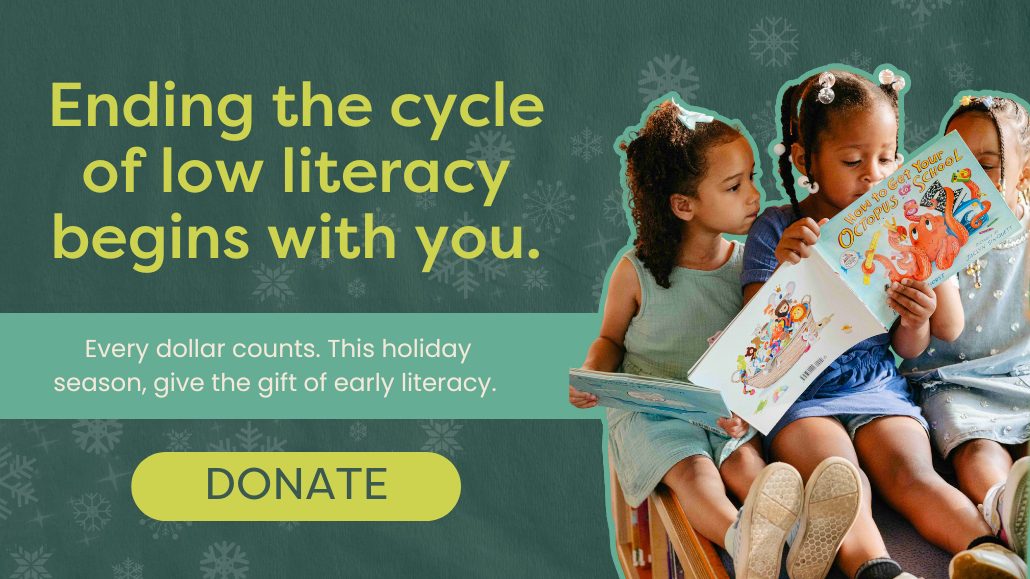Cuyahoga County Literacy Dashboard
2024-25 Update
On February 28, The Literacy Cooperative held its 6th annual Cuyahoga County Literacy Dashboard event. TLC President & CEO Bob Paponetti, Vice-President Laureen Atkins-Holliday, and Alex Dorman, Research Fellow at The Center for Community Solutions, reflected on the past five years of literacy data and provided insight into the recommended next steps and strategies.
Call to actions:
- Join the Side-by-Side Literacy Network at reading@literacycooperative.org
- Enroll more children in Dolly Parton’s Imagination Library at https://www.ohioimaginationlibrary.org/enroll
- Connect more adults to adult education at https://highered.ohio.gov/educators/workforce-adult-ed/aspire/aspire-locations
- Connect adult education to postsecondary training
- Include Literacy & Numeracy Refreshers in All Training, including Workplace Training
Cuyahoga County’s Literacy Crisis
Data shows the pervasive, county-wide challenge of young children and adults without the skills needed to succeed
Cuyahoga County’s literacy crisis will persist for generations unless progress is accelerated in preparing young children for kindergarten and helping more adult residents secure at least a high school education.
An assessment of the state of literacy in Cuyahoga County done by The Literacy Cooperative found:
- 42% of all children enrolling in kindergarten in the 2018-19 school year weren’t adequately prepared to succeed
- More than half of Cuyahoga’s children unprepared for kindergarten are enrolling in suburban school districts
Kindergarten Readiness (2018-2019)

Children unprepared for kindergarten are less likely to read proficiently by the end of third grade ‑ a predictor of later success in school.
And adults without a high school diploma lack the basic literacy and other skills required to access in-demand jobs that offer paths to prosperity.
Low literacy levels pervade all of Cuyahoga County. For example:
- 10% of all adults, or 101,221 residents, don’t have a high school diploma as of 2017
- Nearly 40% of those without a high school diploma are ages 18-44
- 58% of adults (18-44) without a high school diploma live in the city of Cleveland
- More than half of the young adults (18-24) without a diploma live in the suburbs
Adults without a High School Diploma





